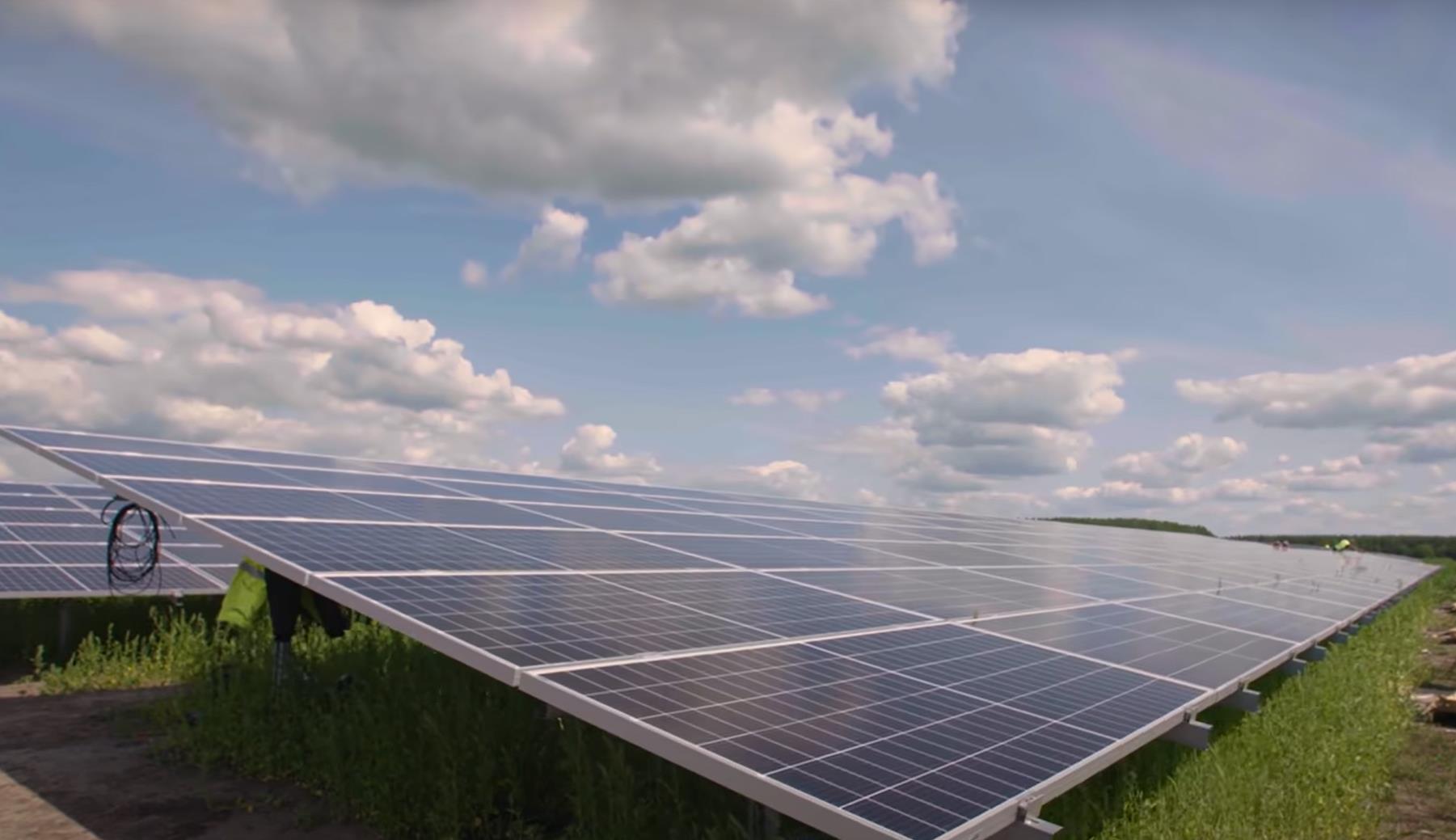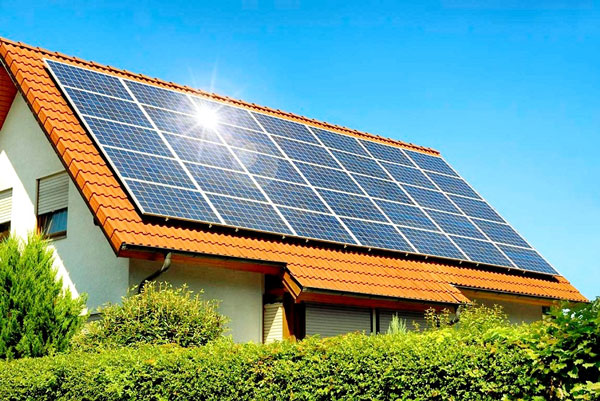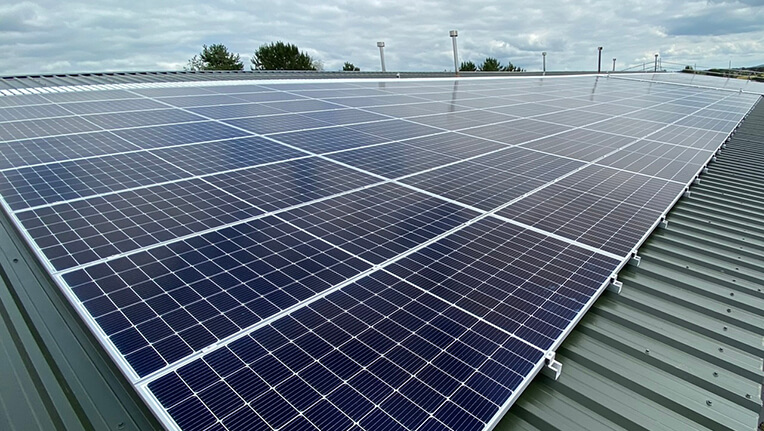To reduce losses in silicon solar cells, optimize anti-reflection coatings, implement surface texturing, enhance passivation layers, improve light capture, reduce recombination losses, and use high-quality materials
Optimize Anti-Reflection Coatings
As the layer that prevents light from being absorbed by free electrons, an anti-reflection coating is technologically the key to silicon solar cell efficiency optimization. More light entering the cell means more electricity generation.
Best Anti-Reflection Technology Available
Typically, the industry standard anti-reflection coatings are made of silicon nitride, or titanium dioxide and it treated this adversely. They are chosen to have an opacity which is manipulated to reflect as little light as possible where solar cells are their most affected wavelengths. The material of choice for this advanced level of anti-reflection has been silicon nitride in large part because its technical properties (especially refractive index) are suitable, and it is compatible with silicon solar cell processes. It generally cuts the reflection down from about 30% found in uncoated cells to less than 5%.
Recent Developments & Results
Current developments have seen the pump shifted to multi-layered coatings comprised of individual materials targeting discreet segments of the solar spectrum. The only differnece in this approach is that they are trying to obtain reflectance over even smaller range of wavelenghts. One such configuration for instance is a magnesium fluoride and a silicon nitride combination that could bring down the mesh of reflectance substantially below 2% over the entire relevant spectrum. This step up has driven a reasonable improvement in cell efficiency.
Practical Implementation
Coating these materials requires precision techniques like plasma-enhanced chemical vapor deposition (PECVD) that enables the orion of coating thickness at the nanometer scale. The AR coating thickness is very important and must be controlled very precisely to obtain the quarter-wavelength optical thickness required to provide complete cancellation of reflected light by optical interference.
Field Performance
Field studies show that the total solar panel efficiency gains might be about 3% when improved AR coatings are used. This is a serious improvement, especially in utility-scale solar installations, where every percent count, as even small percentage improvement quintuple wholesale power output.

Implement Surface Texturing Techniques
Surface texturing is a widely-used technique in silicon solar cells that enhances the efficiency of enhancing light transmittance []. These techniques reduce the number of light waves that are reflected off the cell, therefore reflecting more light into the cell and converting more light into electricity.
Security practices and strategies
The texturing of the surface consists of small pyramidal or random structures in the silicon wafer. These structures improve the light-interaction area on the front of the cell and reduce the reflectivity of the Si surface. These textures are generically created using the process of anisotropic etching, selectively dissolving silicon along crystallographic planes to generate a series of pyramid-like structures.
On point texturing for best absorption
Studies have demonstrated that a pyramid size of 5-10 microns and a depth of 10 microns is optimal for light capture. This: configuration maximizes the path lengths of the photons within the silicon, which is how they increase the capture probability.
Implementation Process
Texturization is usually done by etching the silicon wafer with either a potassium hydroxide (KOH) solution or a sodium hydroxide (NaOH) solution. Etching is a tricky process, as it needs to be performed in a very uniform manner to guarantee that solar cells on the entire wafer fabricated at the end provide the same level of efficiency.
Impact on Efficiency
It has been shown that proper surface texturing could make silicon's surface reflectance, initially over 30%, reduced to <10% [33]. At scales where Ge particles are the dominant component of the film, a remarkable reduction in reflectivity can result, increasing the overall efficiency of the solar cell by several percentage points. For instance, SunPower surpassed 22% high efficiency in commercial solar cells with the adoption of abovementioned advanced texturing techniques.
Enhance Passivation Layers
The development of passivation layers is essential to high-performance silicon solar cells with an extended lifetime. The passivation layers lower the recombination losses stemming from the number of electrons and holes recombining at the surface of the silicon rather than adding to the electrical output.Passivation
The main purpose of passivation layers is to provide a defense against the defects and impurities related to the silicon surface, which could trap the charge carriers and thereby decrease the efficiency of the cell. A good passivation layer accomplishes this by effectively 'locking in' the carriers, thereby enabling their transport to the electrodes.The building materials and technology the designers utilized was
Passivation is often done with silicon nitride and aluminum oxide. Silicon nitride then acts as a passivation layer as well as an anti-reflective layer, two birds with one stone. In contrast, aluminum oxide has been documented for its surface passivation superiority, specifically on the back of the cell.Implementation Techniques
These materials are typically applied by chemical vapor deposition (CVD) or atomic layer deposition (ALD). ADL is known for depositing very thin, conformal films, well suited for passivation. These layers are typically a few nanometers thick, so thin enough that they should not interfere with normal cell function and should not insulate the electrical property of the cell.Effectiveness and Results
Studies have recently shown that surface recombination velocities can be reduced to below 10 cm/s by optimizing passivation layers, in comparison hundreds of cm/s in unpassivated cells. This is a drastic reduction that enables an improvement in efficiencies around 1% in absolute terms in commercial-grade cells. To name only one of dozens of available examples, the commercial application of Passivated Emitter Rear Cell (PERC) technology, which encompasses advanced passivation methods, has resulted in panel efficiencies greater than 22%.Improve Light Capture Mechanisms
This involves the design of the solar cell so as to guide light along paths in which they are more likely to be absorbed. Methods like texturing the surface, photonic crystals etc. helps in increasing path of light and corresponding absorption in cell.Advanced Texturing Techniques
Creating microscopic pyramids or other geometric shapes on the surface of the silicon increases the total surface area, leading to more light being absorbed. A well configured model according to the name \"texterpzzies\" can decrease reflectance to less than 5% versus about 30% reflectance of a not properly configured model.Photonic Crystal Implementation
The device incorporates photonic crystals in the solar cell, which hold light in the structure while photons are absorbed. They have engineered these crystals to directionally steer light so that rays of sunlight are much more likely to hit the photovoltaic (PV) layers repeatedly -- greatly enhancing light absorption and electricity generation.Applications Real
Thin-film specialist First Solar is among the companies that have implemented more advanced light capturing mechanisms through the addition of underlayers that help improve light absorption, for example. This is resulting in some of the highest efficiency rates ever reported, with certain modules exceeding 22% efficiency (record).
Reduce Recombination Losses
The alleviation of recombination losses is one of the key factors that can lead to significant improvements in the efficiency of silicon solar cells. If electron-hole pairs in the solar cell do not contribute to electricity production, but instead recombine prematurely, then the solar cell is no lead to recombiniatlon they inodel.
Mechanism of Recombination
In silicon solar cells, recombination losses generally stem from three primary processes: radiative, Auger, and Shockley-Read-Hall (SRH) recombination. In heavily doped regions, while SRH recombination may occur preferentially around the defects in Si lattice, which is higher in the impurity concentration.
Ways to Reduce Recombinant Production
Manufacturers can reduce these losses by using higher quality silicon, the right doping profile, and improved passivation of the surfaces and interfaces of the solar cell.
Delivering Silicon with Quality
This is why high quality and purity silicon is so important: impurities and defects act as recombination centres. Recombination rates have been shown to decrease significantly with advanced purification and crystal growth techniques. For example, the high-purity Float-Zone (FZ) silicon can reach lifetimes of some milliseconds in the minority carriers--orders of magnitude longer than the microseconds in most commercial materials.
Optimizing Doping Profiles
In this regard, the doping profile modifies the electric field distribution within the solar cell, and the bending of the electric fields lines should in turn modify the corresponding paths travelled by the carriers to catch the contacts. If doping is carefully controlled, then a stronger and more uniform electric field may be generated, which would minimize recombination. State of the art laser doping approaches provide a high level of control on the profile (depth and concentration) of the dopants, helping to reduce recombination.
Improving Surface and Interface Passivation
The surface and interface treatment with passivation techniques help in the reduction of recombination active defect sites. The surfaces are passivated using silicon nitride or aluminum oxide, adding surface recombination velocities of less than 1 cm/s Processes like Atomic Layer Deposition (ALD) are capable of producing extremely thin and conformal passivation layers which are essential for maintaining long carrier lifetimes.
Tangible Effects and Enhancements
Integrating these with other techniques has delivered significant jumps in solar cell efficiency. PERC (Passivated Emitter and Rear Cell) technology, for instance, was effectively developed to implement passivation for lower recombination losses, which is now leading edge cell efficiencies above 22%. This is a significant improvement on traditional solar cell architectures.
Use High-Quality Materials
High-Quality Raw Materials Are the Basis to Reduce waste and improve the efficiency and life of silicon solar cells. The first approach is based on the proper choice of silicon, and other componentry materials known to present better electronic and structural properties.
Importance of Silicon Purity
It is important because impurities or defects in the silicon used in solar cells can harm electrical output by acting as recombination centers where electron/hole pairs recombine without any contributing to electrical output. This effect is largely ameliorated by the introduction of high-purity silicon, especially for electronic-grade silicon, which has the impurity levels controlled down to the parts per billion, thereby virtually eliminating these recombination events.
Silicon Production Breakthroughs
Silicon production processes have evolved as well such as the Czochralski process and Float-Zone refining which permit production of silicon with higher purity levels. The Float-Zone silicon alloy is known for reduced impurity and dislocation densities for improved carrier lifetimes and hence solar cell efficiencies.
Effect Of Material Quality On Performance
In addition to enhancing efficiency, solar panels made from these high-quality, defect-free materials are more reliable and longer-lasting. For example, extra impurities in a less-pure material can lead to more rapid degradation of solar cells from lower-quality silicon over time as compared to higher-quality silicon from a purification process that requires less energy to operate. Silicon solar cells, when well made, can retain more than 90% of their original solar power conversion efficiency after 25 years of operation.
Going with Advanced Materials
In addition to using metals like silver and copper for contacts instead of the traditional silicon are essential. The materials need to have great electrical conductivities and chemical stabilities to prevent further loss of energy during the service life of the solar cell. For example, silver nanowire contacts have been integrated, and it has been shown to both improve conductivity and flexibility, thereby improving the overall performance of the solar cells.
A Guide to Quality Control in Manufacturing
High-quality manufacturing is subjected to strict quality control, allowing us to use the best materials and guarantee that the solar cell is as good as we want it to be. This usually involves manufacturers checking the purity or quality of materials using spectroscopy and other analytical techniques at multiple points throughout a production process.



